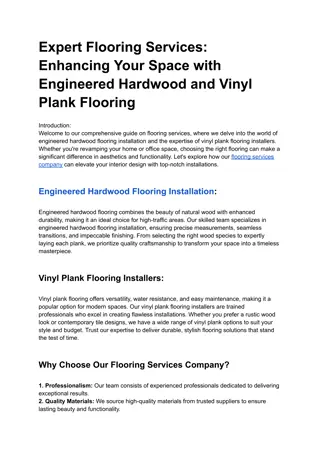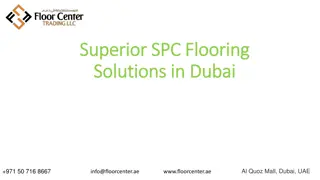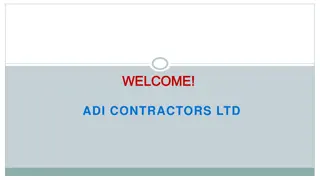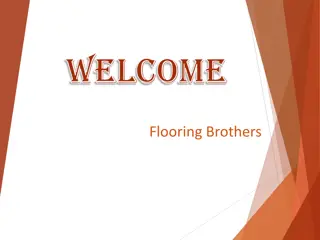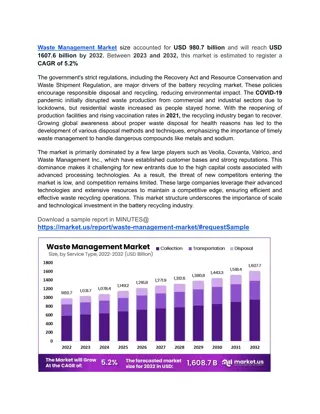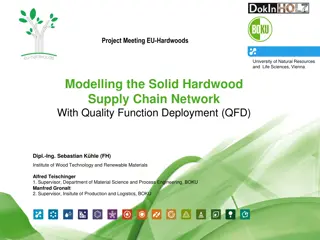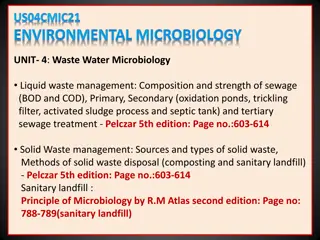
How do Professionals dispose of hardwood flooring waste responsibly?
Learn how professionals responsibly dispose of hardwood flooring waste, reducing environmental impact and promoting sustainable practices.
Download Presentation

Please find below an Image/Link to download the presentation.
The content on the website is provided AS IS for your information and personal use only. It may not be sold, licensed, or shared on other websites without obtaining consent from the author. Download presentation by click this link. If you encounter any issues during the download, it is possible that the publisher has removed the file from their server.
E N D
Presentation Transcript
How do Professionals dispose of hardwood flooring waste responsibly? When undertaking a home renovation, particularly involving hardwood floor removal, it's easy to get swept up in the excitement of transformation. However, the responsible management of the waste generated during this process is just as important as the project itself. Proper disposal methods not only help maintain a clean and safe environment but also minimize the ecological footprint of your renovation project. Understanding Hardwood Removal Before addressing waste disposal, it s essential to grasp the hardwood removal process. Various factors, including the type of flooring, installation methods, and the specific area being remodeled (such as a bathroom floor removal), influence the approach to take. Hardwood floors may be nailed, glued, or floated over a subfloor, requiring different techniques for removal:
Nailed Floors: Removal involves pulling up individual boards using specialized tools, which minimizes damage and allows for potential reuse. Glued Floors: These require careful prying to avoid damaging the subfloor, and removal can be more labor-intensive as it often involves scraping residual adhesive. Floating Floors: Typically easier to remove, these can often be lifted as whole sections, making the process quicker and less laborious. The Impact of Improper Disposal The consequences of improper disposal extend beyond aesthetics. Hardwood flooring waste that ends up in landfills contributes significantly to environmental degradation. When wood decomposes in a landfill, it releases methane, a potent greenhouse gas. Moreover, certain flooring materials may contain harmful chemicals or adhesives that leach into the ground, posing risks to soil and water quality. In addition, improper disposal practices can lead to regulatory fines for contractors and homeowners alike. Understanding the importance of responsible waste management. potential consequences emphasizes the 1. Assessing the Waste Before the removal process begins, professionals conduct a thorough assessment of the existing flooring. This is not merely a formality; it helps determine the best approach to take and the potential options for reuse or recycling. Key Factors to Consider: Material Type: Different hardwoods have varying levels of recyclability and potential for reuse. For example, oak and maple are often more desirable for repurposing than less common or lower-quality woods. Condition of the Flooring: If the planks are in good condition, they can be easily reused. Damaged or degraded materials may require different handling. Material Type Environmental Considerations Solid Hardwood Highly recyclable; minimal toxins; can be used for furniture or decor. Engineered Hardwood Contains adhesives; check for VOCs; recycling options may vary.
Laminate Often non-recyclable; check with local facilities for disposal options. Vinyl Plank Requires specialized disposal due to PVC content; some recycling facilities accept it. 2. Efficient Removal Techniques Efficient hardwood floor removal is not just about getting the job done quickly; it's also about minimizing waste and maximizing the potential for reuse. Professionals employ various techniques and tools to achieve this: Using the Right Tools: Specialty tools like floor scrapers, pry bars, and oscillating saws allow for precise and careful removal of planks. Technique Matters: Working in small sections can help preserve the integrity of reusable boards. Experts often use a systematic approach to track which boards are salvageable and which must be disposed of. Protecting the Subfloor: Careful removal not only benefits the hardwood but also prevents damage to the subfloor beneath, which can be costly to repair. 3. Reuse and Repurpose One of the most effective ways to minimize waste is through creative reuse. Many professionals advocate for repurposing hardwood flooring materials rather than discarding them. This practice not only benefits the environment but also allows for unique and custom creations. Creative Repurposing Ideas: Custom Furniture: Use planks to construct tables, benches, or shelving units. The natural beauty of hardwood can add character to any piece. Decorative Elements: Craft wall art, headboards, or picture frames using leftover wood, showcasing its natural grain and finish. Garden Projects: Utilize old hardwood as garden borders, compost bins, or planters. Encouraging clients to think creatively about repurposing can lead to innovative outcomes and reduce waste significantly.
4. Recycling Options If reuse isn't viable, recycling is the next best option. Many municipalities have specific programs dedicated to recycling wood waste, and professionals often have established relationships with local recycling centers. Steps for Effective Recycling: Research Local Facilities: Check for recycling centers that accept hardwood flooring. Some may even specialize in construction waste. Preparation for Recycling: Remove any nails or staples before drop-off to prevent damage to recycling equipment. It s also wise to clean the boards to ensure they are free from contaminants. Documentation: Keep records of what materials were recycled and where they were taken. This not only aids in tracking waste but also supports sustainability reporting if applicable. 5. Disposal of Non-Recyclable Materials For flooring materials that cannot be reused or recycled, responsible disposal is essential. Professionals should be well-informed about how to handle these materials properly: Hazardous Waste Disposal: Certain adhesives and treatments may contain hazardous substances. Check local regulations for guidelines on hazardous waste disposal to avoid penalties. Responsible Landfill Practices: When landfill disposal is necessary, ensure materials are sorted and prepared according to local waste management standards. This might include compacting materials to minimize space usage or segregating hazardous from non-hazardous waste. 6. Local Regulations and Guidelines Navigating local regulations is paramount for responsible waste disposal. Laws governing construction and demolition waste can vary widely from one locality to another. Here s how experts can stay compliant: Research Local Ordinances: Many municipalities provide guidelines on acceptable disposal methods for construction waste, including any recycling mandates.
Engage management officials can provide clarity on proper disposal methods and any upcoming changes in regulations. Stay Updated: Keeping abreast of changes in environmental regulations helps ensure ongoing compliance and can assist in planning future projects. with Local Authorities: Communicating with local waste 7. The Role of Professional Services Hiring pros for hardwood floor removal and waste disposal offers numerous advantages. Not only do they bring expertise to the process, but they also have the tools and knowledge necessary for responsible waste management. Benefits of Hiring Professionals: Benefit Description Expertise Experienced contractors know how to identify recyclable materials and the best disposal methods. Time Efficiency Professionals complete the removal process quickly and effectively, minimizing disruption to your home. Compliance They are familiar with local regulations, ensuring proper disposal and reducing the risk of fines or penalties. 8. The Environmental Impact of Responsible Disposal The impact of responsible hardwood flooring waste disposal extends beyond immediate benefits. It contributes to larger sustainability efforts, fostering a healthier environment. Environmental Benefits: Reduced Carbon Footprint: Recycling materials lowers the demand for new products, significantly reducing overall emissions associated with manufacturing. Resource Conservation: Responsible disposal ensures that valuable resources are reused, which conserves forests and reduces the strain on natural resources. Community Health Improvement: Proper waste management prevents harmful chemicals from leaching into soil and waterways, promoting public health and well-being.
9. Cost Considerations for Disposal While hiring professionals for hardwood removal may involve upfront costs, the long-term benefits often outweigh these initial investments. Efficient and responsible waste management can save money by preventing potential fines and reducing the need for future repairs. Cost Breakdown for Disposal Services: Service Average Cost Professional Removal $2 to $4 per square foot Recycling Fees $0 to $50 (varies by location) Hazardous Disposal Material $50 to $300 (depending on quantity) Conclusion Proper disposal of hardwood flooring waste is essential not only for maintaining a clean work environment but also for fostering a sustainable future. When it comes to hardwood floor removal, Tear It Up Floor Removal is your go-to solution. Our experienced team ensures efficient and responsible disposal of your old flooring, prioritizing sustainability every step of the way. Contact us today to schedule a consultation and see how we can help you achieve a clean and eco-friendly renovation. Let s make your flooring dreams a reality while caring for our planet! Site Article: How do Professionals dispose of hardwood flooring waste responsibly?

